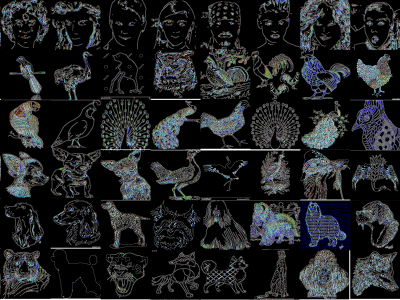artificial intelligence

This dataset is made for traditional, machine learning, and deep neural-network-based virtual sensor development and evaluation.
- Categories:
 91 Views
91 ViewsGorakhpur is a city located in the north-eastern region of
Uttar Pradesh state of India. It is a sub-part of Purvanchal
region of Uttar Pradesh and Bihar. In the south-western
part, Gorakhpur periphery spreads along Rapti river. In
the north-western region, Gorakhpur shares its periphery
with Chillua Tal. In the southern part, Ramgarh Tal with a
perimeter of 18 km is located.
Water Bodies:
+ Ramgarh Tal is a historically important heritage site and
is also a tourist attraction; spread over 700 hectares of
- Categories:
 336 Views
336 ViewsThis data collection focuses on capturing user-generated content from the popular social network Reddit during the year 2023. This dataset comprises 29 user-friendly CSV files collected from Reddit, containing textual data associated with various emotions and related concepts.
- Categories:
 2167 Views
2167 ViewsFormAI is a novel AI-generated dataset comprising 112,000 compilable and independent C programs. All the programs in the dataset were generated by GPT-3.5-turbo using dynamic zero-shot prompting technique and comprises programs with varying levels of complexity. Some programs handle complicated tasks such as network management, table games, or encryption, while others deal with simpler tasks like string manipulation. Each program is labelled based on vulnerabilities present in the code using a formal verification method based on the Efficient SMT-based Bounded Model Checker (ESBMC).
- Categories:
 1989 Views
1989 ViewsThis dataset consists of “.csv” files of 4 different routing attacks (Blackhole Attack, Flooding Attack, DODAG Version Number Attack, and Decreased Rank Attack) targeting the RPL protocol, and these files are taken from Cooja (Contiki network simulator). It allows researchers to develop IDS for RPL-based IoT networks using Artificial Intelligence and Machine Learning methods without simulating attacks. Simulating these attacks by mimicking real-world attack scenarios is essential to developing and testing protection mechanisms against such attacks.
- Categories:
 4479 Views
4479 ViewsA CNC adapter was utilized together with the software established as part of the GRBL project to operate the CNC adapter, and two data sets were produced for the physical model in order to build the linear and circular motion models. The parameters for motion quantity, motion duration, and feed rate are in the data set.
- Categories:
 364 Views
364 ViewsThe advancements in the field of telecommunications have resulted in an increasing demand for robust, high-speed, and secure connections between User Equipment (UE) instances and the Data Network (DN). The implementation of the newly defined 3rd Generation Partnership Project 3GPP (3GPP) network architecture in the 5G Core (5GC) represents a significant leap towards fulfilling these demands. This architecture promises faster connectivity, low latency, higher data transfer rates, and improved network reliability.
- Categories:
 3800 Views
3800 ViewsThe "Noisy Imperfect Partial Symbolic Sketches" (NIPSS) dataset provides symbolic sketches generated from the texture extraction method described in [1] when the inputs are associated with, either Imagenet animals [2] that have been preprocessed by [3], or the CelebAMask-HQ person faces described in [4].
Any sketch is an image containing a multichannel (artificial color) binary sequence of information, where artificial colors have consisted in concatenating the results of different regularizers from [1].
- Categories:
 604 Views
604 Views







